Aly Sabri Abdalla
Federated Neuroevolution O-RAN: Enhancing the Robustness of Deep Reinforcement Learning xApps
Jun 15, 2025Abstract:The open radio access network (O-RAN) architecture introduces RAN intelligent controllers (RICs) to facilitate the management and optimization of the disaggregated RAN. Reinforcement learning (RL) and its advanced form, deep RL (DRL), are increasingly employed for designing intelligent controllers, or xApps, to be deployed in the near-real time (near-RT) RIC. These models often encounter local optima, which raise concerns about their reliability for RAN intelligent control. We therefore introduce Federated O-RAN enabled Neuroevolution (NE)-enhanced DRL (F-ONRL) that deploys an NE-based optimizer xApp in parallel to the RAN controller xApps. This NE-DRL xApp framework enables effective exploration and exploitation in the near-RT RIC without disrupting RAN operations. We implement the NE xApp along with a DRL xApp and deploy them on Open AI Cellular (OAIC) platform and present numerical results that demonstrate the improved robustness of xApps while effectively balancing the additional computational load.
Integrated LLM-Based Intrusion Detection with Secure Slicing xApp for Securing O-RAN-Enabled Wireless Network Deployments
Apr 01, 2025



Abstract:The Open Radio Access Network (O-RAN) architecture is reshaping telecommunications by promoting openness, flexibility, and intelligent closed-loop optimization. By decoupling hardware and software and enabling multi-vendor deployments, O-RAN reduces costs, enhances performance, and allows rapid adaptation to new technologies. A key innovation is intelligent network slicing, which partitions networks into isolated slices tailored for specific use cases or quality of service requirements. The RAN Intelligent Controller further optimizes resource allocation, ensuring efficient utilization and improved service quality for user equipment (UEs). However, the modular and dynamic nature of O-RAN expands the threat surface, necessitating advanced security measures to maintain network integrity, confidentiality, and availability. Intrusion detection systems have become essential for identifying and mitigating attacks. This research explores using large language models (LLMs) to generate security recommendations based on the temporal traffic patterns of connected UEs. The paper introduces an LLM-driven intrusion detection framework and demonstrates its efficacy through experimental deployments, comparing non fine-tuned and fine-tuned models for task-specific accuracy.
LSTM-Based Proactive Congestion Management for Internet of Vehicle Networks
Oct 12, 2024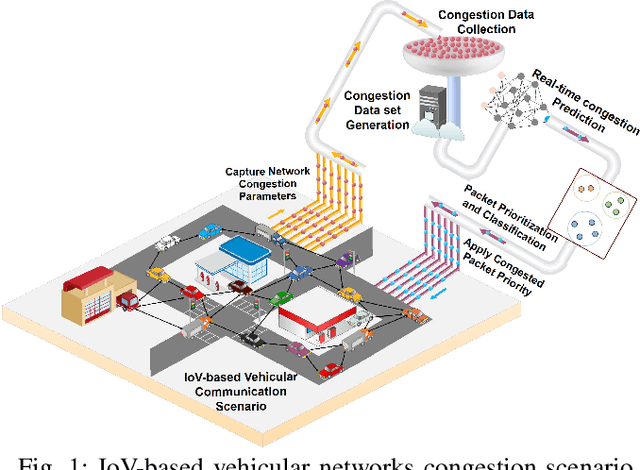
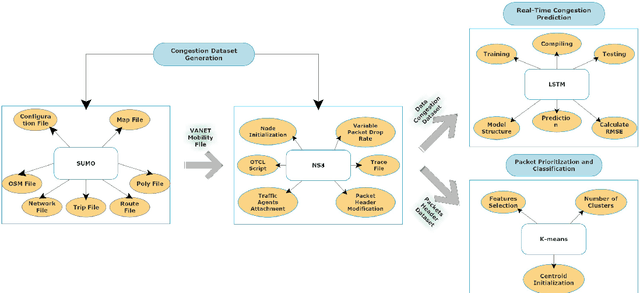
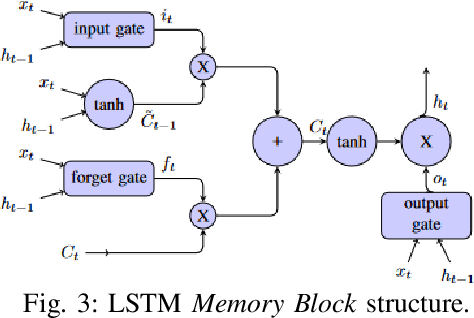
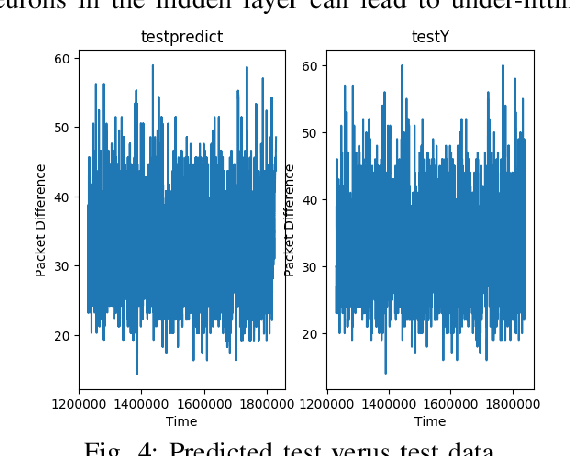
Abstract:Vehicle-to-everything (V2X) networks support a variety of safety, entertainment, and commercial applications. This is realized by applying the principles of the Internet of Vehicles (IoV) to facilitate connectivity among vehicles and between vehicles and roadside units (RSUs). Network congestion management is essential for IoVs and it represents a significant concern due to its impact on improving the efficiency of transportation systems and providing reliable communication among vehicles for the timely delivery of safety-critical packets. This paper introduces a framework for proactive congestion management for IoV networks. We generate congestion scenarios and a data set to predict the congestion using LSTM. We present the framework and the packet congestion dataset. Simulation results using SUMO with NS3 demonstrate the effectiveness of the framework for forecasting IoV network congestion and clustering/prioritizing packets employing recurrent neural networks.
5G Advanced: Wireless Channel Virtualization and Resource Mapping for Real Time Spectrum Sharing
Oct 08, 2023



Abstract:The coexistence between active wireless communications and passive RF spectrum use becomes an increasingly important requirement for coordinated spectrum access supporting critical services. The ongoing research and technological progress are focused on effective spectrum utilization including large-scale MIMO and energy efficient and low-power communications, innovative spectrum use and management, and resilient spectrum sharing, just to name a few. This paper introduces a new tool for real time spectrum sharing among emerging cellular networks and passive RF sensing systems used for remote sensing and radio astronomy, among others. Specifically we propose leveraging wireless channel virtualization and propose a virtual-to-physical resource mapping framework, mapping types, and control signaling that extends the current 5G New Radio (NR) specifications. Our technology introduces minimal changes to the protocol and is meant to be transparent to the end user application. We validate the proposed technology by extending a 3GPP compliant 5G NR downlink simulator and identify further research directions where work is needed on designing effective ways to explicitly signal the need for spectrum or spectrum use predictions.
UAV Trajectory and Multi-User Beamforming Optimization for Clustered Users Against Passive Eavesdropping Attacks With Unknown CSI
Jun 13, 2023Abstract:This paper tackles the fundamental passive eavesdropping problem in modern wireless communications in which the location and the channel state information (CSI) of the attackers are unknown. In this regard, we propose deploying an unmanned aerial vehicle (UAV) that serves as a mobile aerial relay (AR) to help ground base station (GBS) support a subset of vulnerable users. More precisely, our solution (1) clusters the single-antenna users in two groups to be either served by the GBS directly or via the AR, (2) employs optimal multi-user beamforming to the directly served users, and (3) optimizes the AR's 3D position, its multi-user beamforming matrix and transmit powers by combining closed-form solutions with machine learning techniques. Specifically, we design a plain beamforming and power optimization combined with a deep reinforcement learning (DRL) algorithm for an AR to optimize its trajectory for the security maximization of the served users. Numerical results show that the multi-user multiple input, single output (MU-MISO) system split between a GBS and an AR with optimized transmission parameters without knowledge of the eavesdropping channels achieves high secrecy capacities that scale well with increasing the number of users.
DDPG Learning for Aerial RIS-Assisted MU-MISO Communications
Jul 13, 2022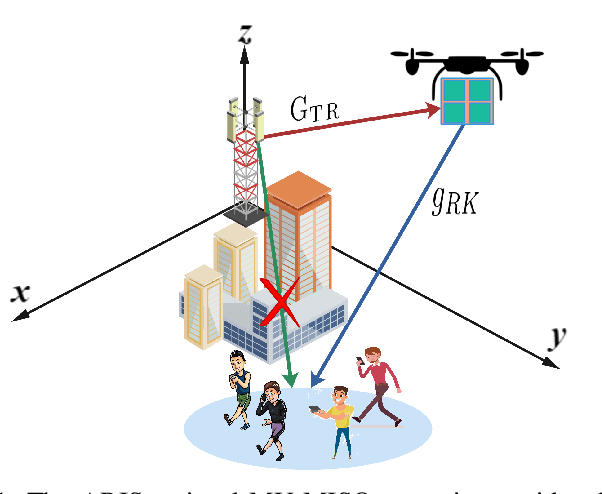
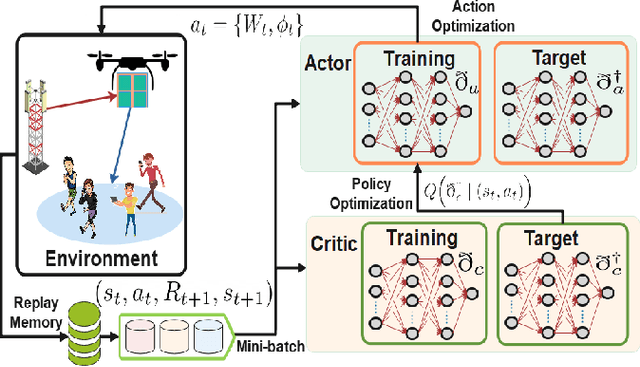
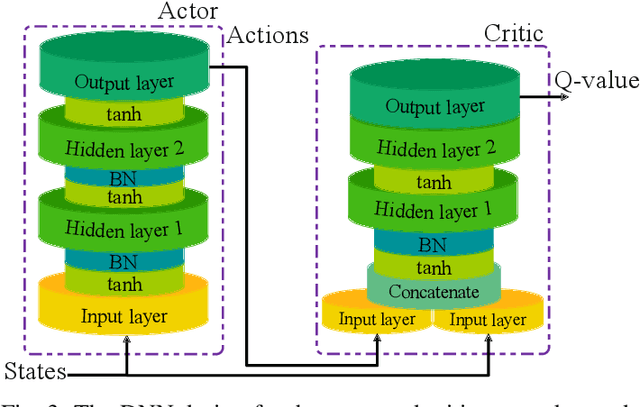

Abstract:This paper defines the problem of optimizing the downlink multi-user multiple input, single output (MU-MISO) sum-rate for ground users served by an aerial reconfigurable intelligent surface (ARIS) that acts as a relay to the terrestrial base station. The deep deterministic policy gradient (DDPG) is proposed to calculate the optimal active beamforming matrix at the base station and the phase shifts of the reflecting elements at the ARIS to maximize the data rate. Simulation results show the superiority of the proposed scheme when compared to deep Q-learning (DQL) and baseline approaches.
Aerial Base Station Positioning and Power Control for Securing Communications: A Deep Q-Network Approach
Dec 21, 2021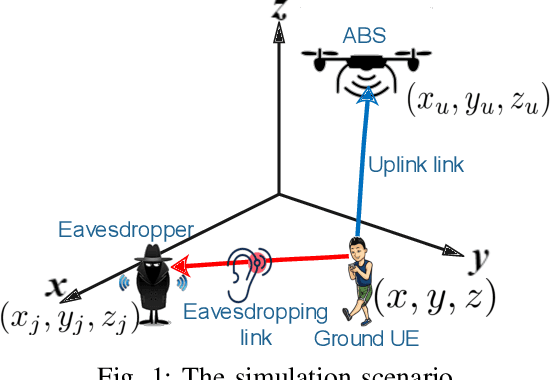


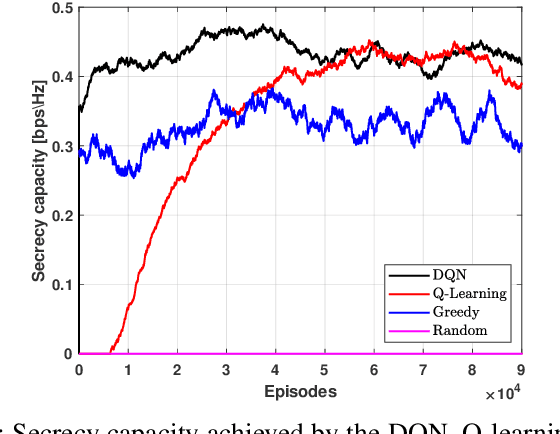
Abstract:The unmanned aerial vehicle (UAV) is one of the technological breakthroughs that supports a variety of services, including communications. UAV will play a critical role in enhancing the physical layer security of wireless networks. This paper defines the problem of eavesdropping on the link between the ground user and the UAV, which serves as an aerial base station (ABS). The reinforcement learning algorithms Q-learning and deep Q-network (DQN) are proposed for optimizing the position of the ABS and the transmission power to enhance the data rate of the ground user. This increases the secrecy capacity without the system knowing the location of the eavesdropper. Simulation results show fast convergence and the highest secrecy capacity of the proposed DQN compared to Q-learning and baseline approaches.
Open-Source Software Radio Platform for Research on Cellular Networked UAVs -- It Works!
Dec 11, 2021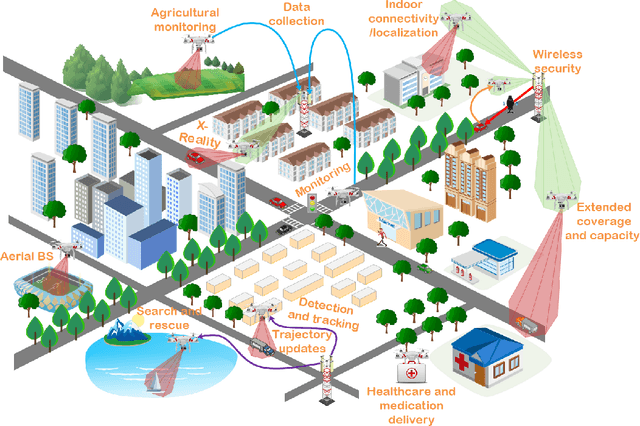
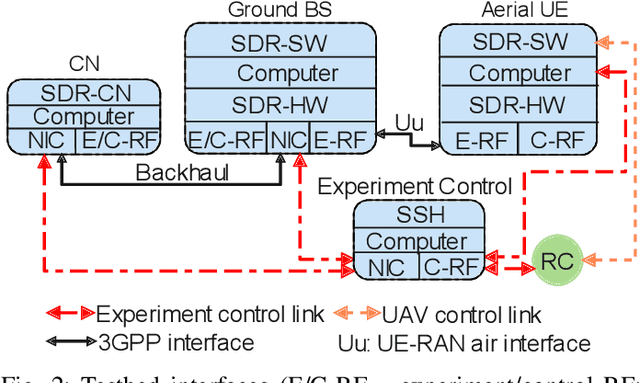
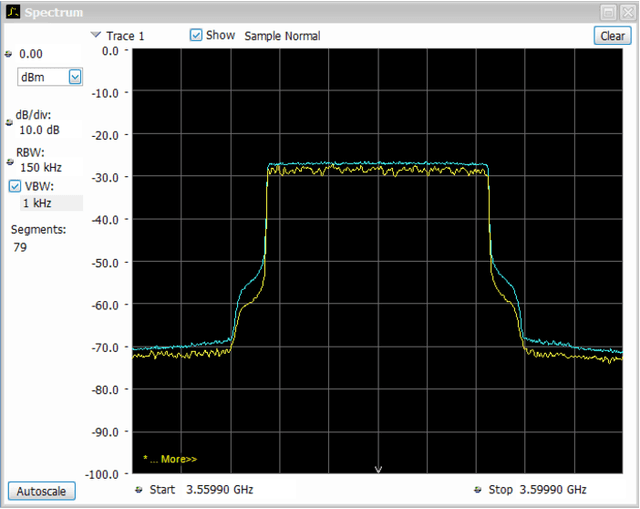
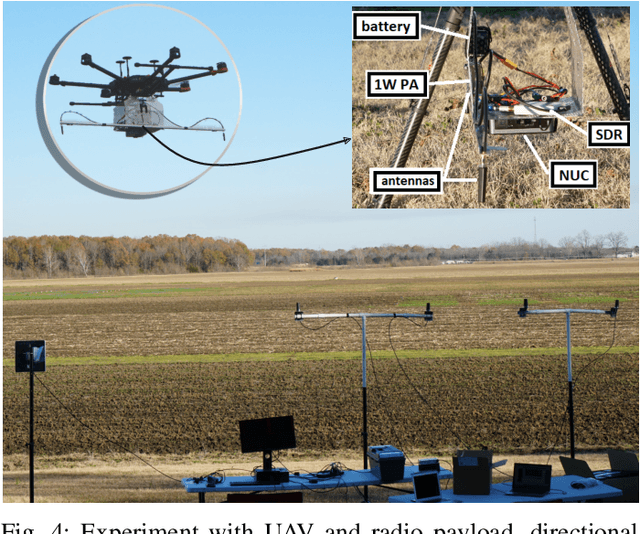
Abstract:Cellular network-connected unmanned aerial vehicles (UAVs) experience different radio propagation conditions than radio nodes on the ground. Therefore, it has become critical to investigate the performance of aerial radios, both theoretically and through field trials. In this paper, we consider low-altitude aerial nodes that are served by an experimental cellular network. We provide a detailed description of the hardware and software components needed for establishing a broadband wireless testbed for UAV communications research using software radios. Results show that a testbed for innovation in UAV communications and networking is feasible with commercial off-the-shelf hardware, open-source software, and low-power signaling.
 Add to Chrome
Add to Chrome Add to Firefox
Add to Firefox Add to Edge
Add to Edge